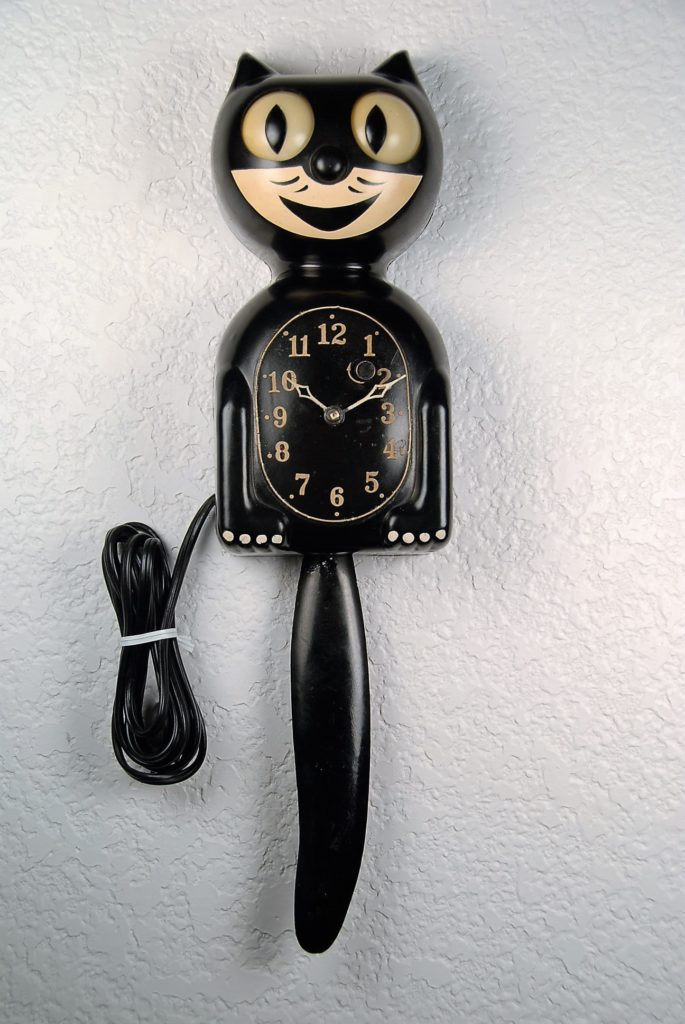
Literally, there’s no better time than meow, to learn how valuable and collectible- vintage “Kit Cat” Klocks are. Currently, these purr-fect clocks even have their own Fan Club with thousands of members.
“You’ve got to be kitten me right?” “It’s meow, or never to learn a little nostalgia about these adorable animated
cat wall clocks.
History of the Kit-Cat Klock
The Kit-Cat Klock was the brilliant design of Mr. Earl Arnault (1904-1971) which he designed in 1932. The cat’s tail wags back and forth, and his eyes moved curiously back and forth; and no matter how bad your day was going, looking at his delightful grin always made the day seem a bit brighter.
In 1939, Allied Clock Company and Clifford Stone of Portland Oregon, started the production of these adorable tail-wagging pendulum clocks-which are still being produced today. The first Kit-Cat clock used a wind-up timing mechanism via a knob located on the front of the clock -along with electric wiring.
It is said original early 1939 Kit-Cat clocks, can sell for over $10,000-PAW-SOME!
(His appearance somewhat reminds me of “Felix the Cat”-the mischievous cartoon comic-strip character created in the early 1900’s.)

During the years there have been several changes to the novelty Kit-Cat klock. During the 1940s, the clock came in red, black or white-but soon, a variety of colors and jewels would be added. Additionally, the cat’s shoulder area became more rounded, and bow ties and collars were added.

In 1962, the Allied Clock Company moved the clocks production to Southern California and the company name was changed to-California Clock Company. In the late ’80s, the California Clock Co. was forced to find another way for the timed movement on Kit-Cat’s exclusive “one-second” animation-which was used for the rolling eyes and the wagging tail. American electric motor manufacturing was almost exclusively relocated to Asia, leaving Kit-Cat Clock without a US motor supplier. Left with this dilemma, the company invented a battery-run technology along with some precision balancing inner clock parts, using gravity to keep everything moving in a controlled manner.
During the ’90s, the Limited Colour Collection of Kit-Cat Klocks were produced. “Lady Kit-Cat” was introduced in 2001-which of course featuring long eye-lashes and pearls instead of a bow tie.
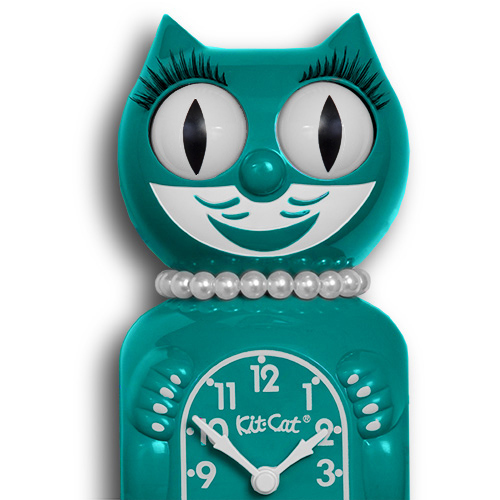
Dating A Kit-Cat Klock
When production first started, the clocks were made of steel, but in the ’40s molded plastic was used (bakelite); then in the ’50s, it was decided he would now have upper paws and wear a swanky bow tie.
For dating them here are a few key points to remember:
- If the back of the clock is made of steel and is marked “Seattle WA-it dates pre-1940’s
- No bow tie-it dates pre-1954
- If the back of the clock states “Seattle WA” and has a plastic back and NO front paws-it was made before the early ’50s.
- The earliest clocks will be marked “Portland, OR” on the back, and are extremely valuable!
- If the back of the clock is marked “San Juan Capistrano, CA” it was made mid ’60s-early ’90s. Backs marked “El Monte, CA” means the clock was made in the early ’60s.
- Battery clocks were made after 1990
- If the front of the clock has “Kit-Cat” on its clock face, it was made after the year 1982.
(For other dating tips, check out the Kit-Cat official online site.)
Most of the Kit-Cat Klocks produced in the ’40s and ’50s can sell for over $500 if found in its original box.
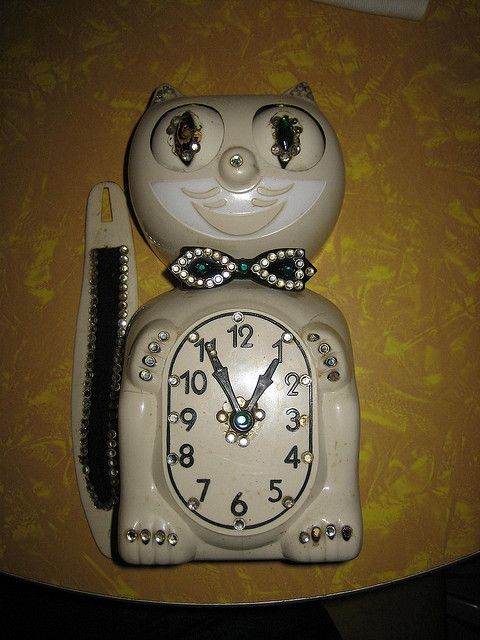
The year 2007, marked Kit-Cat’s Klocks 75th anniversary, which was celebrated with the 75-day, Route 66 “Great All-American Road Show. Since the Kit-Cat Klock is considered to be an American icon, Woody Young, President of the California Clock Company stated it would be a perfect fit to include the world’s largest Kit-Cat Klock (75”) and a 75-year-old Ford Deuce Roadster. The car would be specially painted to celebrate the clock by participating in over 75 events (parades and car shows) across the country.

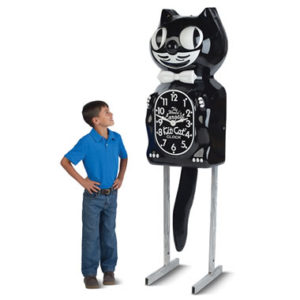
In 2012, marked the 80th anniversary of the Kit-Cat Cat Klock, and 30 years with Woody Young as it’s president. To celebrate these anniversaries, Kit-Cat sponsored the only 100 percent American-grown commercial float in the 2012 Pasadena Rose Bowl Parade.
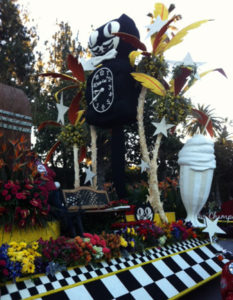
Aw, this was a really nice post. In concept I wish to put in writing like this additionally – taking time and actual effort to make a very good article… but what can I say… I procrastinate alot and under no circumstances appear to get something done.
Thank you!